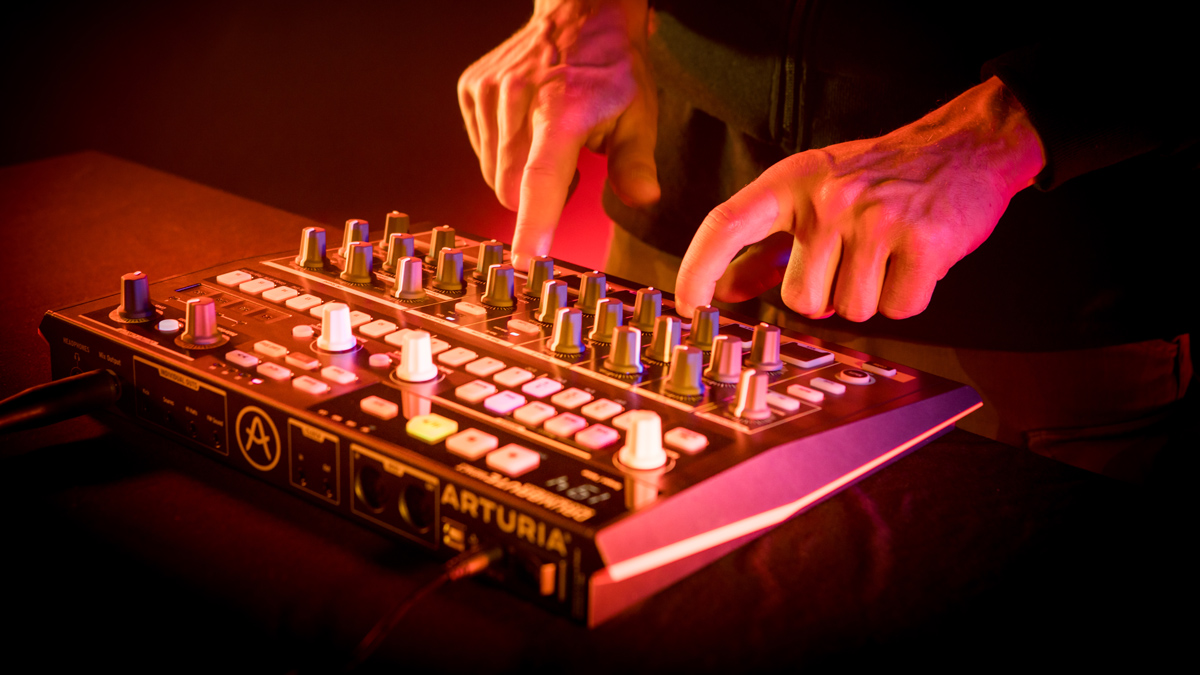5 things you will love about the Korg Volca Drum
Korg’s best beat-maker?
Hot on the heels of the Minilogue XD launch comes the Korg Volca Drum and first impressions of this DSP-driven percussion synth is that it has all the other Volcas beat.
Big talk we know, especially as we’ve only been in its presence for a few hours, but so far you can colour us impressed and here some reasons why we think you will be too...
1. Unique dual-layer, six-part DSP synth engine
The Volca Drum is not your average digital drum machine, you won’t find PCM-samples here. Instead, the engine is DSP-powered analogue modelling, not too dissimilar to the original ER-1 Electribe Rhythm. Basic waveforms including sine wave, sawtooth wave, and HPF noise are joined by three types of pitch modulator and amp envelope generator. Then you have bit reduction to create some grit and wave folding to add in overtones. And all of this is arranged over two layers.
2. Waveguide resonator
The effect section features a waveguide resonator that's based on physical modeling, and which adds sympathetic resonances to the sound. You can choose from two types of waveguide: Tube adds the resonance of a cylindrical object such as a drum body or a long pipe and Strings adds the metallic resonance of a string. The three knobs located in the centre of the panel let you specify the Decay (amount of attenuation), Body (sonic character), and Tune (pitch). Setting Tune to a lower value will produce a delay-like behaviour.
3. Accent and Choke functions
You can set accents to create strong beats at specific steps, not simply as an on/off setting but in a range of 16 levels, allowing you to express a subtle sense of groove and rhythmic nuance. There's also a choke function that lets you specify which of multiple parts should take priority when sounded simultaneously, such as the hi-hat closed and open sounds of a drum machine. Parts for which you've enabled the choke function will not sound simultaneously; only the one part of the lowest part number will be heard.
4. Custom LCD screen
In a first for the Volca series, a custom LCD is used. The high-brightness display provides excellent visibility, portraying complex settings graphically for comprehension at a glance, and ensuring that volca drum is easy to use with a quick learning curve.
5. Two randomisation functions
The Volca Drum provides two functions that let you randomly change the sound (layer) of the selected single part, or to randomly vary the step, slice, accent, and active step settings of the selected single part. By using the randomise functions during a performance, you can add unexpected change and development to the sound and the pattern.
Want all the hottest music and gear news, reviews, deals, features and more, direct to your inbox? Sign up here.



I take care of the reviews on MusicRadar and Future Music magazine, though can sometimes be spotted in front of a camera talking little sense in the presence of real musicians. For the past 30 years, I have been unable to decide on which instrument to master, so haven't bothered. Currently, a lover of all things high-gain in the guitar stakes and never one to resist churning out sub-standard funky breaks, the likes of which you'll never hear.
